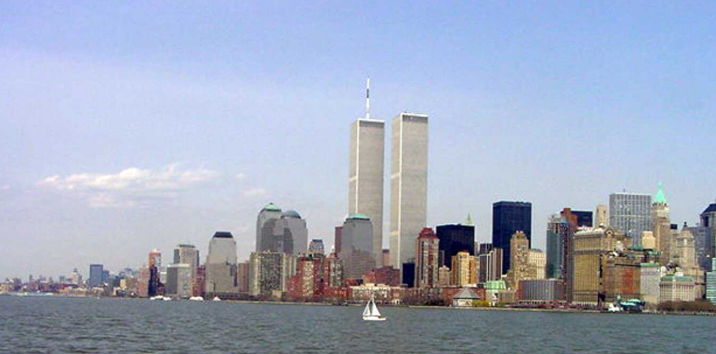
The Myth: “The Towers Shouldn’t Have Collapsed”
In the days after September 11, 2001, one question spread almost as fast as the news footage itself: How could two skyscrapers, designed to withstand the impact of an airplane, simply fall? For many, it seemed unthinkable. The Twin Towers were built to be strong. Some took the collapse as proof that something didn’t add up.
But here’s the truth: the World Trade Center was not doomed because of the impact. It was doomed because of the heat. And when you look at the engineering, the collapse isn’t mysterious: it’s inevitable.
Stage 1: Steel in an Inferno
The planes’ fuel turned several floors into ovens, heating the steel columns past 800°C. At that temperature, steel doesn’t just weaken, it creeps. Think of a paperclip you’ve bent back and forth until it droops. Under constant pressure, hot steel slowly buckles, even without the application of extra force.
Once enough columns on a single floor failed, the weight of the building above, tens of millions of kilograms, was suddenly no longer supported. That’s when the upper section began to fall.
Stage 2: The Domino of Doom
Here’s the part most people underestimate. When the upper block of the tower dropped just one floor, it picked up speed and energy. By the time it smashed into the floor below, it hit with more than 30 times the weight the columns were designed to carry.
Couldn’t the lower structure “cushion” the fall? Not really. Even if the steel bent like rubber, the math shows it could only absorb about one-eighth of the falling energy. Every new floor that failed added more falling mass, increased velocity, and reduced the chance of arresting the collapse.
That’s why the towers didn’t tip over like trees. They came straight down in a near free-fall, finishing in roughly ten seconds—the same time it would take a ball to drop from the roof to the ground.
Stage 3: Why “It Shouldn’t Have Happened” Is a Myth
The myth often goes like this: “If a skyscraper is designed for plane crashes, how did this happen?”
The truth is that the towers were designed to withstand the impact, not the fire. In fact, the engineers modeled a Boeing 707 hitting the towers. And they were right: the impact alone didn’t bring them down. What no one accounted for was the hours of uncontrolled fire, fueled by jet fuel and debris, that stripped away insulation and cooked the steel from the inside.
In other words, the towers held up exactly as designed until the fire made it impossible to hold them up.
Addendum: What If the Planes Hit Higher Up?
One fascinating detail from the engineers who studied the collapse: if the planes had struck higher, the towers might still have fallen, but perhaps not in the same way. A smaller upper block could have acted more like a collapsing plate than a rigid hammer, causing a series of smaller jolts instead of one overwhelming crash.
However, with 20 or more floors collapsing as a single rigid chunk, the outcome was catastrophic.
Why This Matters Today
Beyond myth-busting, there’s a sobering lesson for architecture and engineering. If a single overheated floor can trigger collapse, future skyscrapers must account for fire as much as impact. Researchers have suggested stronger fireproofing, hardened stairwells, or new materials that can withstand extreme heat.
It’s unlikely any building could be made truly “collapse-proof” against such an attack. But extending evacuation time, improving insulation, and designing for worst-case fire scenarios can make a life-or-death difference.
Let’s Explore Together
By peeling away the myths, we uncover the real physics that can shape safer futures.
So now it’s your turn:
- How do you envision this research influencing our perspective on skyscrapers?
- If you were designing the next generation of tall buildings, what feature would you prioritize—impact resistance, fireproofing, or evacuation routes?



